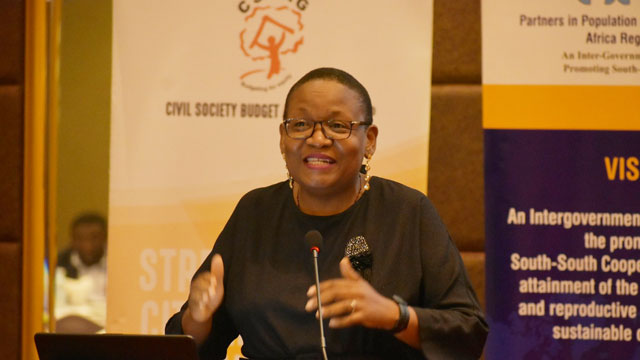
Kampala, Uganda | THE INDEPENDENT | Fifteen percent of the women in Uganda can’t access contraceptives.
In the survey which was conducted jointly by the Ministry of Health, Uganda Bureau of Statistics (UBOS), and Makerere University School of Public Health, researchers say sexually active respondents were asked whether they intended to get pregnant and they said no, and yet they were not using any contraceptive method.
Dr. Fredrick Makumbi, the Principal Investigator says when they asked women who had delivered in the last two years or were pregnant at the time, one in every two said they didn’t want to. This represented 46% of the respondents whereby of these, 13% had children and didn’t want any more.
The survey was conducted between September and November 2021 involving public health facilities and women aged 15 to 49 years in 35 households in each of the 141 enumeration areas across the country. These were demarcated by UBOS to offer a representative picture of what is happening across the country.
While overall, only 40% of women are using a method of family planning, results show an increase in contraceptive use among married women at 50%.
When it comes to using modern methods, even as use is still below the 2020 United Nations Family Planning targets that Uganda committed to and failed, there has been a notable increase at 42.7% from 37% in 2020 and 35% in 2019.
Dr. Simon P. S. Kibira, another researcher involved in the survey says a lot more women are now using injectable contraceptives including the newer self-injection method also called Sayana Press.
At 43 percent majority of the women preferred injections, followed by 31% using implants whereas other methods like the IUD or coil as commonly known remain the least preferred at 5% as it has been for the last two years.
Kibira says this could be attributed to the information available for women to make an informed choice since they also found very low levels of counseling done at health facilities especially on expected side effects and guidance on what a person can do in case of side effects.
In this annual survey conducted under a donor-funded Performance Monitoring for Action (PMA) project with an aim of monitoring key family indicators to generate evidence for interventions, researchers also visited some 287 health facilities across the country. Half of them had recorded stockouts for oral contraceptives.
Makumbi says when they asked about the stockouts, health workers said they had placed orders at the National Medical Stores-NMS but had not been refilled. The same happened for implants where 41% of facilities had stockouts and 18% for the injectable.
Dr. Richard Mugahi, the Commissioner of Reproductive Health who was also part of the study teams, said to curb stockouts, they are increasing alternative distribution channels to ensure that registered private health providers can also offer contraceptives for free or charge a very small service fee.
He said this coupled with pharmacovigilance for contraceptives to report any effects of using modern family planning will help them make some gains.
But, while Mugahi offers these as some of the solutions for increased uptake in the pipeline, other experts say more needs to be done both in terms of access to information and services.
Dr. Betty Kyaddondo who heads the National Population Council says issues of contraceptive use by unmarried young women and adolescents continue to be ignored despite the fact that COVID-19 has shown young people are actually having sex.
“I know there is fear to implement but it’s high time we opened up about the use of contraceptives among adolescents. Also, where are the men? There are methods like sterilization. Why aren’t they being talked about or even considered in these surveys”.
The survey also finds high rates of fertility desires. 44.8% of the women in the survey are either pregnant or hope to be pregnant in the next two years.
****
URN
 The Independent Uganda: You get the Truth we Pay the Price
The Independent Uganda: You get the Truth we Pay the Price




A lot to learn from these findings
There is a group of females who may access the intervention but how consistent is the use unless they opt for injection, implant or IUD?
Even then, they need to seek permission from the spouse!
What is the contribution of power relationships in the actual use of contraception?
What Is the level of involvement of the male gender?
Should a female with underlying medical problems take on the responsibility?
Having failed to suggest vasectomy to a couple comprising of a female at risk, I eagerly a wait some feedback